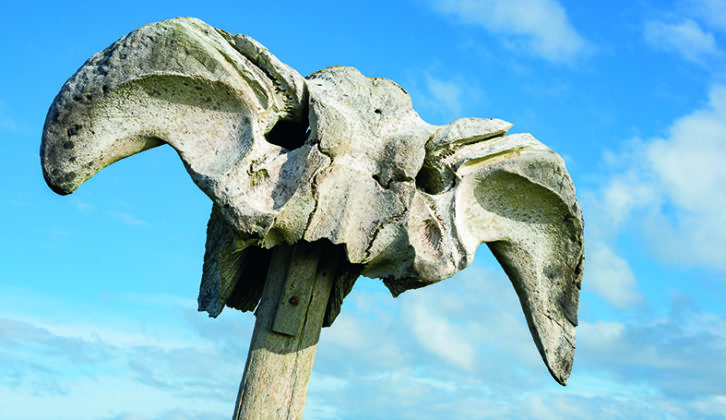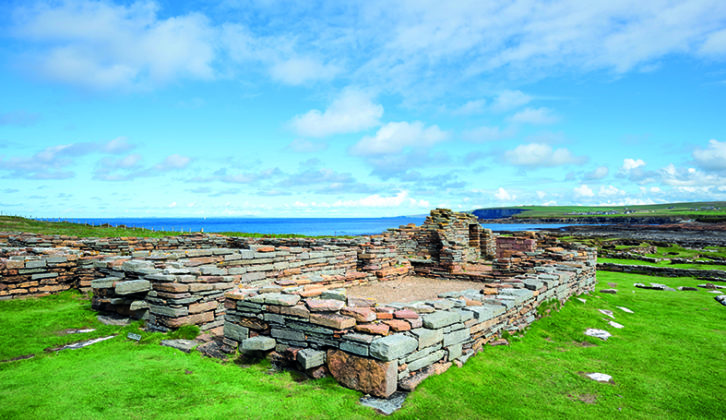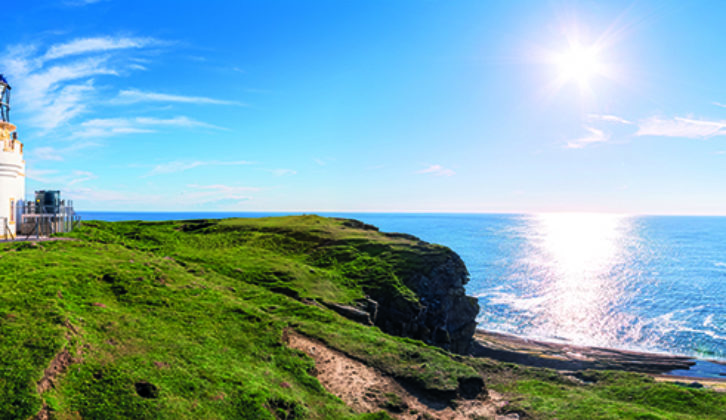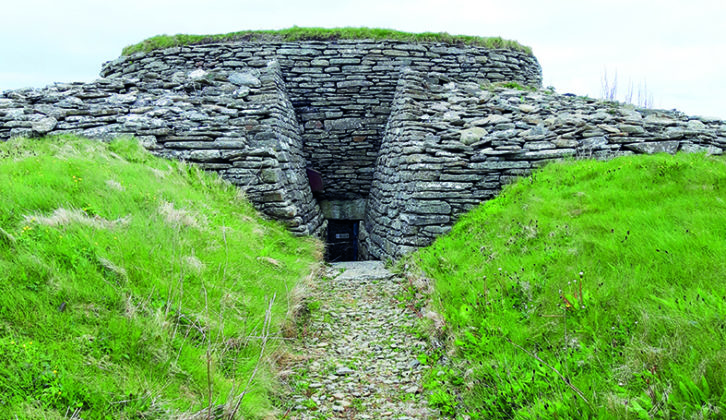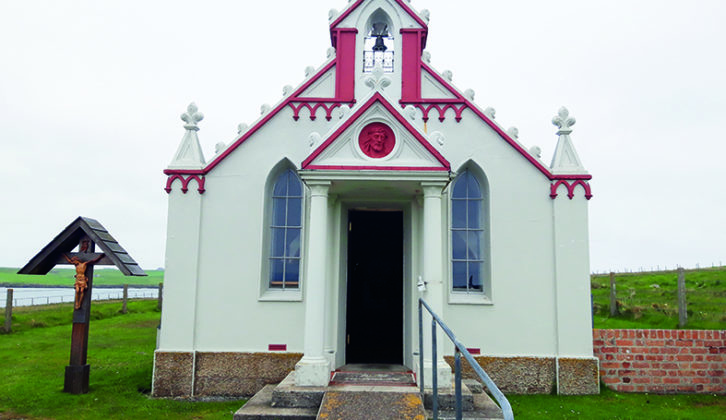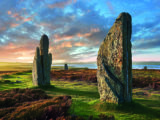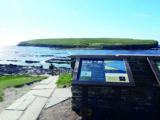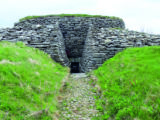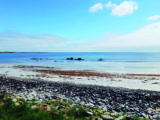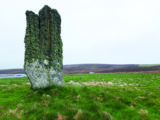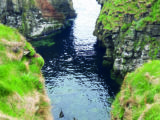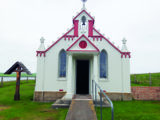During a cold March evening, after reading about Scotland’s planned easing of the lockdown rules for cross-border travellers, we decided to visit the Orkney Islands at the end of May, for a 10-day road trip.
We booked a couple of campsites and ferries online, in the hope that restrictions would indeed be lifted by that time – which they were, to our great delight. Free to go!
The Orkney Islands are situated on the north coast of mainland Scotland, in an archipelago made up of around 70 islands and a population of around 21,500. At 59 degrees north, it is on the sale latitude as southern Norway.
Wild camping

So it was on a wet and windy Thursday afternoon, we set off from home, near the Snowdonia National Park, driving as far as the forest on the outskirts of Stirling, where we decided to wild camp for our first night away.
The next day, we drove all the way to Chanonry Point, a spit of land extending into the Moray Firth between Fortress and Rosemarkie.
We wanted to stop here because at low tide, you can spot dolphins hunting for wild salmon, and to our delight, we saw them surface very close to the shore – it was an amazing sight. We took photos and headed back to our campervan for the night.

The following day, we headed for Scrabster, to catch the 90-minute ferry to Stromness, on Orkney’s mainland. Arriving at lunchtime, we drove around for a while to scout a couple of campsites that we planned to stay at.
Along the way, we stopped off to explore the Neolithic village of Skara Brae. Walking around this ancient settlement, we learned all about the houses and what the rooms were used for. It was fascinating to see how people liven then – about 5000 years ago – and the tools they used.
Sea views and a causeway
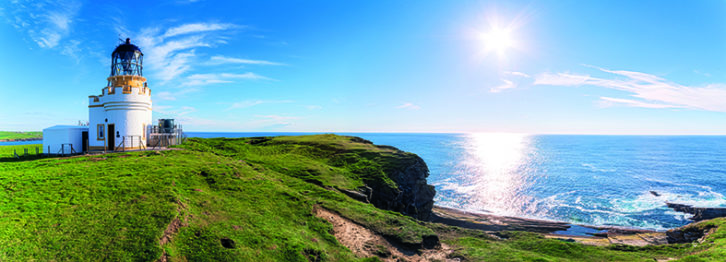
Our next stopping point was Brough of Birsay, an uninhabited tidal island just 13 miles north of Stromness. We arrived at the car park in Point of Buckquoy, facing the island, where we could enjoy lovely views of the sea and surroundings.
The tide was in, which meant we couldn’t walk across to the island that evening; but next morning, we timed it better and were able to stroll across the concrete causeway to explore the remains of an old settlement.
We then walked to the top of the island, where we could see a lighthouse. We walked around it and the rugged clifftops, taking care not to venture too near the edge on such a windy day.

When we returned to our campervan, the car park was full, with people clearly timing their visit to the Brough to coincide with low tide. We stopped for lunch and a much-needed cup of tea before walking further along the coast.
Along the way, we noticed what we thought was a statue in the distance – when we arrived, it turned out to be ancient whalebones.
History records that during the 1870s, a whale washed up on the beach at Doomagua Geo, but nobody knows who turned its jaw and skull into a distinctive sculpture.
Kirkwall to Sanday
Walking further, we could admire the gorgeous views, before heading back to the camper to drive around the rest of the main island.
Later, we caught the ferry from Kirkwall to Sanday and headed to Ayre’s Rock Hostel & Campsite for the night. There, we could hook up and recharge our phones and batteries. Sanday is one of the largest islands in Orkney, with a population of around 550!
Next day, the weather turned, with heavy rains and wind, so we drove around the island for a while before heading to one of our ‘must-see’ places, Start Point Lighthouse. We parked up in a layby and bravely donned our waterproofs to walk for the 45 minutes it takes to reach the lighthouse.

Start Point is not your usual lighthouse: its distinctive black and white stripes make it a recognisable daytime marker, and it is the only Scottish lighthouse painted in this way. The lighthouse is on a tidal island, so we had to plan our walk carefully. The weather didn’t help much, either!
When we arrived, we took a couple of pictures and rushed back to the camper, soaking wet, to dry off and get changed. After warming up with tea and sandwiches, we turned south to Quoyness Chambered Cairn, on the Elsness peninsula.
Quoyness is only about half a mile on foot from the car park, but when we got there, we couldn’t go inside – the gate was padlocked. Peering through the entrance, we could see the passage was very small; you would have to crawl to get inside. There are several Neoltichic cairns on Orkney; this one was dated to about 2900 BC.
From there, we decided to walk further along the coast for a while, before heading back to the campervan for the evening.
The next day, we were vey keen to see what looked like a sunken warship lying close to the shore at the Bay of Lopness, on Sanday. We had passed this intriguing wreck the day before, but the weather hand’t been good enough for photos, so we decided to go back for a proper look.
World War I destroyer

When we arrived, we found an information board explaining that this was the B98, a German WW1 destroyer built in Hamburg in 1915.
The ship was part of the German fleet interned in Scapa Flow at the end of the war. On 21 June 1919, orders were given by the German High Command to scuttle the whole fleet.
Some remnants of the shipping were shared among the allies, one of these being the B98, which had operated as a mailboat.
At it was being towed away, the B98 broke the cable and went aground in the Bay of Lopness. In the 1940s, much of the wreck was cut up for scrap and one of its guns is now on display at the Scapa Flow Museum in Lyness.
We walked along the beach and took plenty of photos, before we had to leave to catch the afternoon ferry to the island of Eday.
Arriving on Eday, we drove for a while to find somewhere to wild camp for the night. There was one spot not far from the ferry terminal, but the surface was not ideal for campers, so we pursued our mission to find a sea view pitch. An hour later, we gave up, having managed to find a flat spot on a bit of remote moorland.
That evening, we relaxed over dinner, listening to the local radio station. It came as no surprise to hear the broadcaster announce this had been the coldest May in Scotland for 25 years!
We definitely agreed with that. On a daily basis, we wore hats and gloves, and made a hot water bottle when we went to bed.
But as we carried on listening to the radio, we also heard that the Duke and Duchess of Cambridge visited Orkney for the first time that day! They were there to open the new hospital in Kirkwall and thank the staff for their efforts during the pandemic. We remembered driving past the hospital on the first day of our trip.
That evening, we had another pleasant surprise, when a hen harrier flew right in front of us as we were relaxing by the camper. I got out my camera as soon as I could, but I was too late to snap this rare bird of prey as it sped off into the distance.
Megaliths and birding

Our next stop, the following day, was to see one of the tallest megaliths in Orkney – the Setter Stone, located to the north of the island. This mysterious monument was erected by the island’s Neolithic inhabitants.
From there, we decided to spend some time at a bird hide which we had spotted earlier on our OS map. It was well worth the detour – we stayed for a while and were rewarded with a brilliant sighting of a pair of red throated divers.
After another scenic drive, we headed off to the ferry terminal to catch the evening departure to Stronsay As soon as we arrived on the island, we decided to settle down and wild camp near Sand of Rothiesholm.

Next morning, we walked along the beautiful white sandy beach and among the dunes. After lunch, we visited Vat of Kirbister, a dramatic (and very photogenic) natural rock arch at the eastern end of the island.
Getting to the arch is a 20-minute stroll from the road. On the way, we spotted guillemots, razorbills and divers nesting there. This area is known as the jewel in Stronsay’s crown, with its collapsed sea cave forming an amphitheatre.
We took lots of photos while we walked, before going back to the ferry terminal for the two-hour crossing to Kirkwall. Here, we stayed in a smart new campsite, Kirkwall Bay Touring Park. This site was, without a doubt, one of the best that we stayed in during our journey.
The following day was going to be quite busy as it was our last in Orkney. We began early, with a visit to the Churchill Barriers.
These impressive concrete causeways were built during World War II. In October 1939, a German U-boat sneaked into Scapa Flow and torpedoed the British battleship HMS Royal Oak, resulting in the loss of more than 800 lives. This disaster prompted Winston Churchill, who was then First Lord of the Admiralty, to order the construction of four barriers to block off the eastern approaches to the anchorage of Scapa Flow. It’s a fascinating place to explore, where you can see the remains of the block ships, deliberately sunk to prevent the waterway from being used, and now superseded by the barriers.
Italian connections

Not far from there, we discovered the ornate Italian Chapel, which was built by prisoners of war who had been captured in North Africa and taken to Lamb Holm in Orkney.
Owing to the shortage of manpower to build the barriers, which coincided with the capture of hundreds of Italian soldiers fighting in North Africa the decision was taken to bring 550 POWs to Lamb Holm and a similar number to Burray.
Outside, the building is distinctive enough, being formed from two Nissen huts, but when you go inside, the decoration is just amazing. It was mainly the work of one prisoner, Domenico Chicchetti. Today, this unique chapel is visited by thousands of visitors each year, including the occasional wedding party. We stayed for about an hour admiring the highly decorated walls and ceiling – a very special building.
From there, we moved on to see the Ring of Brodgar, a Neolithic henge and stone circle just north of Stenness. Constructed around 2000 BC, this is the third largest stone circle in the UK, and forms part of the UNESCO Heart of Neolithic Orkney World Heritage Site.
Later that day, we drove to Warebeth, a lovely sandy beach not far from the ferry terminal at Stromness. We wild camped nearby enjoying a quiet final evening before driving home the next day – it was the longest distance we have ever done in one day, but well worth it!
TOUR ESSENTIALS
When to go
We visited Orkney in the last week of May.
Way to go
Return ferry from Scrabster to Stromness with Northlink Ferries cost £174.44 (two adults plus 5m ‘van).
Where we stayed
Fortrose Bay Campsite
- Wester Greengates, Fortrose, IV10 8RX
- Web www.fortrosebaycampsite.co.uk
- Open April-June, September-October (low season); June-September (high season).
- Charges £20 per night (low season), £25 per night (high season)
Ayre’s Rock Hostel & Campsite
- Ayre’s Rock, Sanday, KW17 2AY
- Web www.ayres-rock-hostel-orkney.com
- Charges £12 per night for motorhome plus £1 per person per night
Kirkwall Bay Touring Park
- Carness Road, Kirkwall, KW15 1UE
- Web kirkwallbay.co.uk
- Charges £18 per night for motorhome (hardstanding pitch) plus £4.80 per adult per night
Find out more
- Orkney Ferries: This service, operated by Orkney Islands Council, needs to be booked in advance
- Dolphin spotting, Moray Firth
- Neolithic Village, Skara Brae
- Orkney Tourist Board
- Wreck of German destroyer B98
- The Churchill Barriers
Food and Drink
We were mostly self-sufficient during our 10-day trip, but we found some useful places when we needed to stock up on food, drink and other supplies.
- Sinclair General Stores: Sanday, KW17 2AY
- Tesco Superstore: Kirkwall, KW15 1RP
- Co-op Convenience Store: Kirkwall, KW15 1RR
If you liked this… READ THESE:
Scotland: Practical Motorhome Travel Guide
Shetland Islands: A Local’s Knowledge
Wildlife Spotting Guide to Birds
If you’ve enjoyed reading this article, why not get the latest news, reviews and features delivered direct to your door or inbox every month. Take advantage of our brilliant Practical Motorhome magazine SUBSCRIBERS’ OFFER and SIGN UP TO OUR NEWSLETTER for regular weekly updates on all things motorhome related.
Start Point is not your usual lighthouse; its distinctive black and white stripes make it a recognisable daytime marker


